Featured Comment:
“I tried this just now and this is the only method I’ve tried that WORKS and didn’t break my straight from the fridge eggs when I added them to the hot water. Thanks so much for sharing! Now I can make perfect onsen tamago everydayyyy”
– yakiimotional (from Instagram)
What is Onsen Tamago (Hot Spring Eggs)?
“Onsen tamago (温泉卵),” also known as “ontama (温玉),” is a type of boiled egg that has a semi-set yolk and a firming egg white. This special quality sets it apart from any other boiled egg.
To prepare, just boil the eggs in water that’s just above 65 degrees Celsius (149 degrees Fahrenheit). This method makes use of the fact that the yolk sets at around 65 degrees Celsius, while the white sets at approximately 75 degrees Celsius.
It’s thought that the term “onsen tamago” comes from cooking eggs in hot spring water, which usually falls within this temperature range.
That’s why you’ll often find these eggs on the menu at accommodation in hot spring resorts.
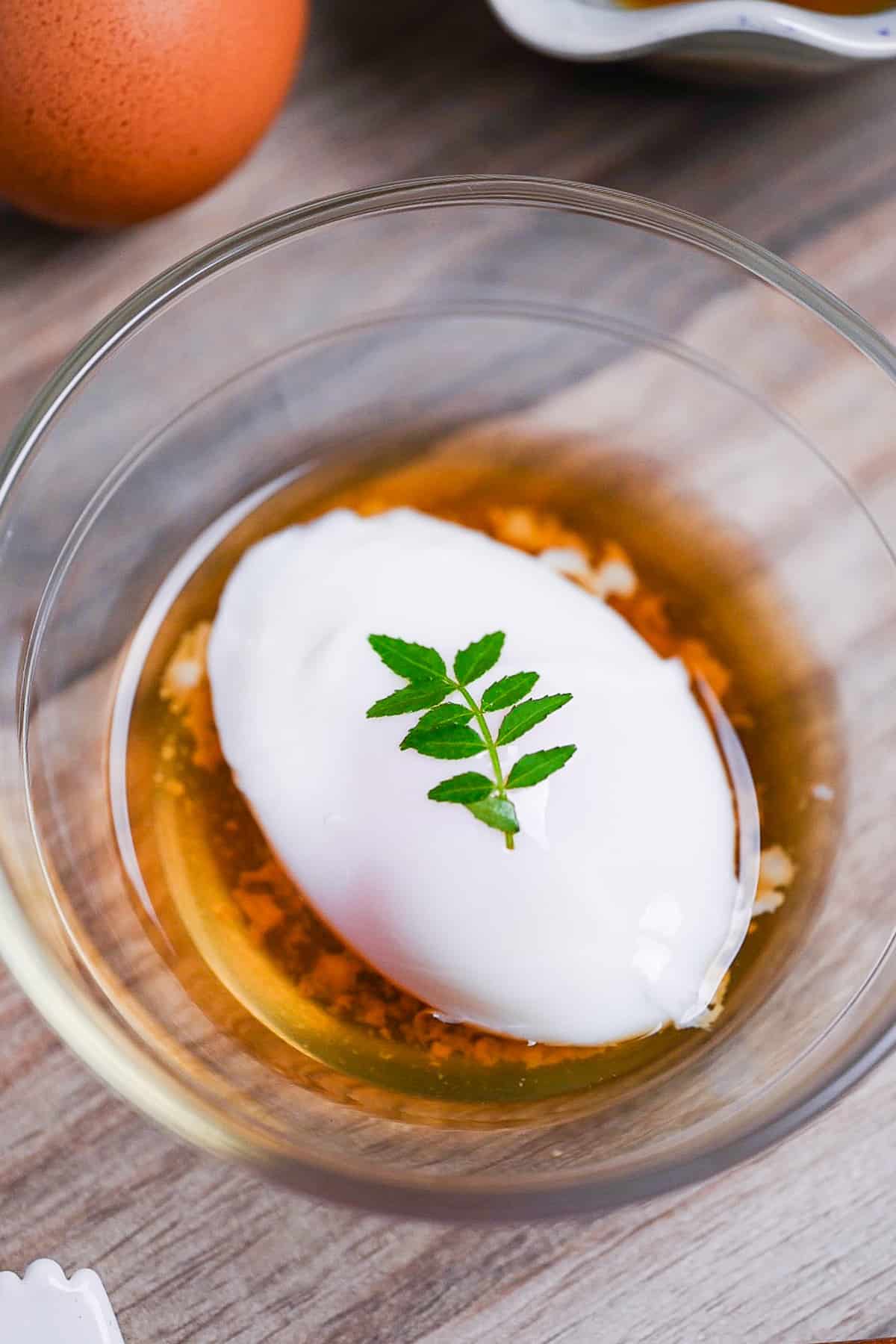

How I Developed This Recipe
In Japan, there are special gadgets designed for making onsen tamago. Unfortunately, these tools aren’t readily available in other countries.
This inspired me to tweak the recipe, adjust the cooking time, and experiment with temperatures to perfect the onsen tamago technique.
In the end, I made an Onsen Tamago that even rivals the ones you’ll find in Japanese supermarkets and convenience stores! Give it a try!

Ingredients & Substitution Ideas
- Pasteurized eggs: Opt for pasteurized eggs, as they have been heat treated to kill bacteria making them safe to consume raw or semi-cooked. I specifically use medium-sized eggs (58g and 64g in Japan) for this recipe. Just a heads-up: this size falls under the large to extra large category in the US. But in the EU, it still counts as a medium.
- Boiled water: Make sure the water is boiling before you start.
- Cold water: This is added to the boiling water to help control the temperature.
- Onsen tamago sauce: This homemade sauce is made by combining dashi, light soy sauce, mirin, and water. This sauce is similar to tsuyu sauce, so feel free to use store-bought or homemade tsuyu sauce as a substitute.
- Wasabi paste: For a bit of extra flavor, you could try adding wasabi. It goes great with onsen tamago and the sauce.
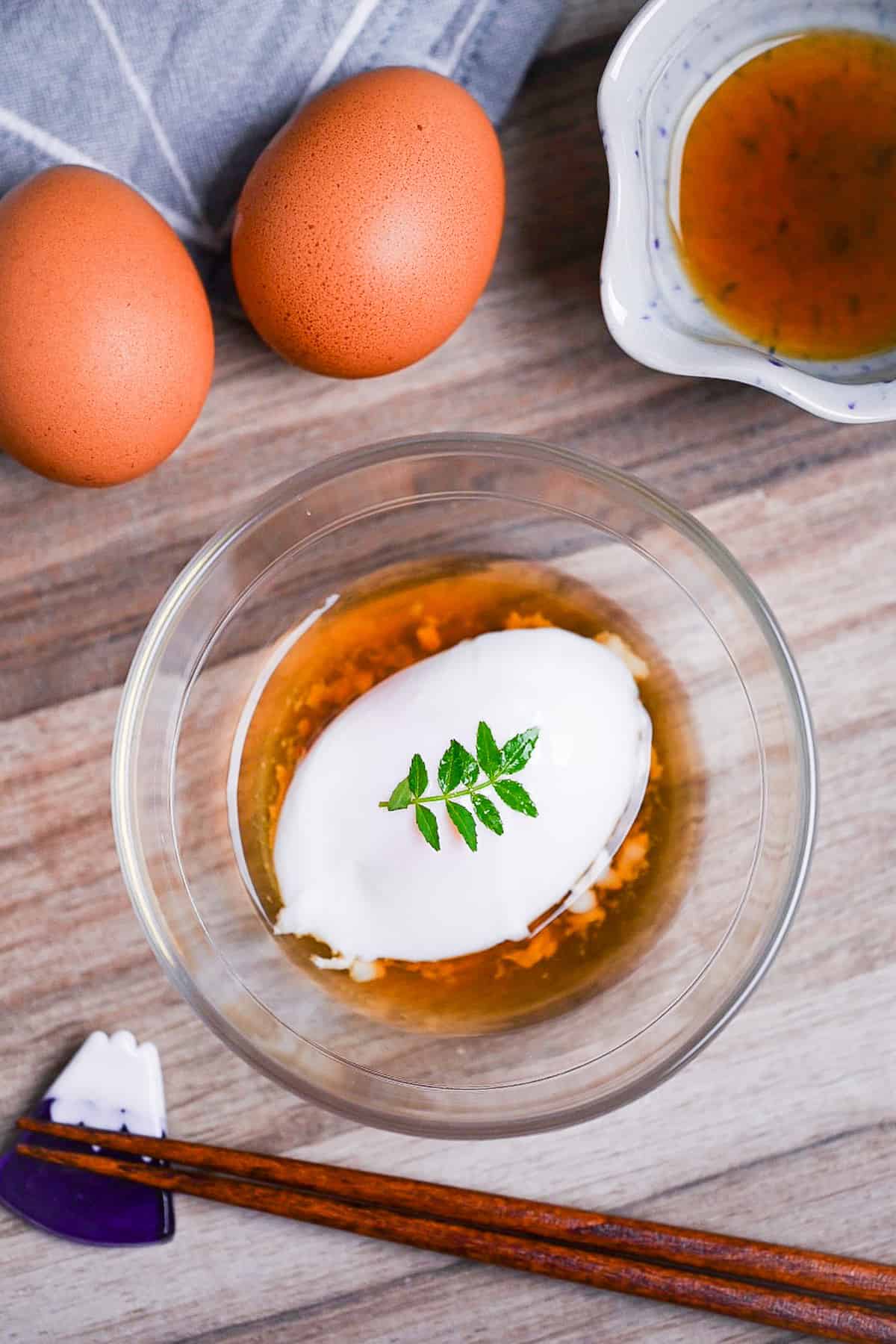
Visual Walkthrough & Tips
Here are my step-by-step instructions for how to make Onsen Tamago at home. For ingredient quantities and simplified instructions, scroll down for the Printable Recipe Card below.
If you prefer to watch the process in action, check out my YouTube video of this recipe for a complete visual walkthrough!
Before you start the recipe, measure out 300ml water and place it in the fridge. It should be thoroughly chilled before you start. My water was chilled to about 10°C (50°F).
Fill a pot with 1500ml of water and bring it to a rolling boil. Make sure to use a pot that has a lid, as we’ll be using the lid later. Placing a lid on will also help it boil faster.
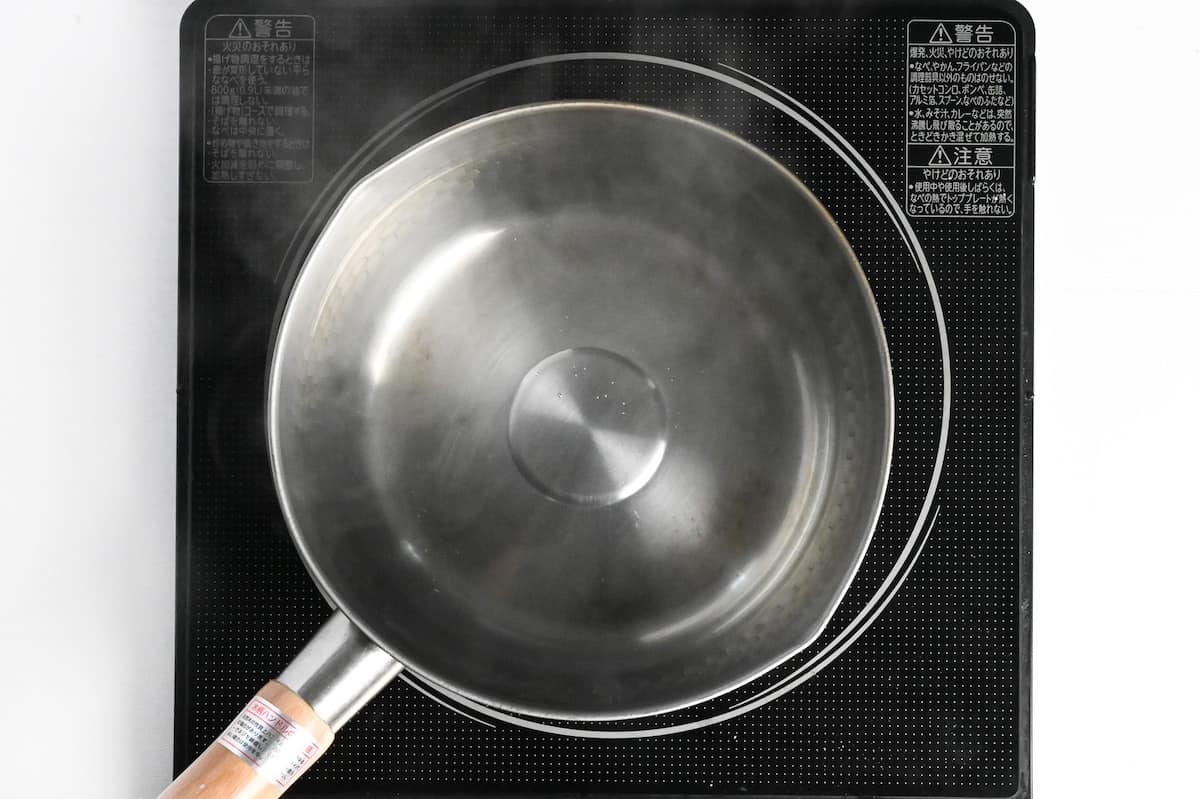
Once the water is rapidly boiling, turn off the heat and add the cold water from the fridge. Leave the pot on the stove to keep it warm.
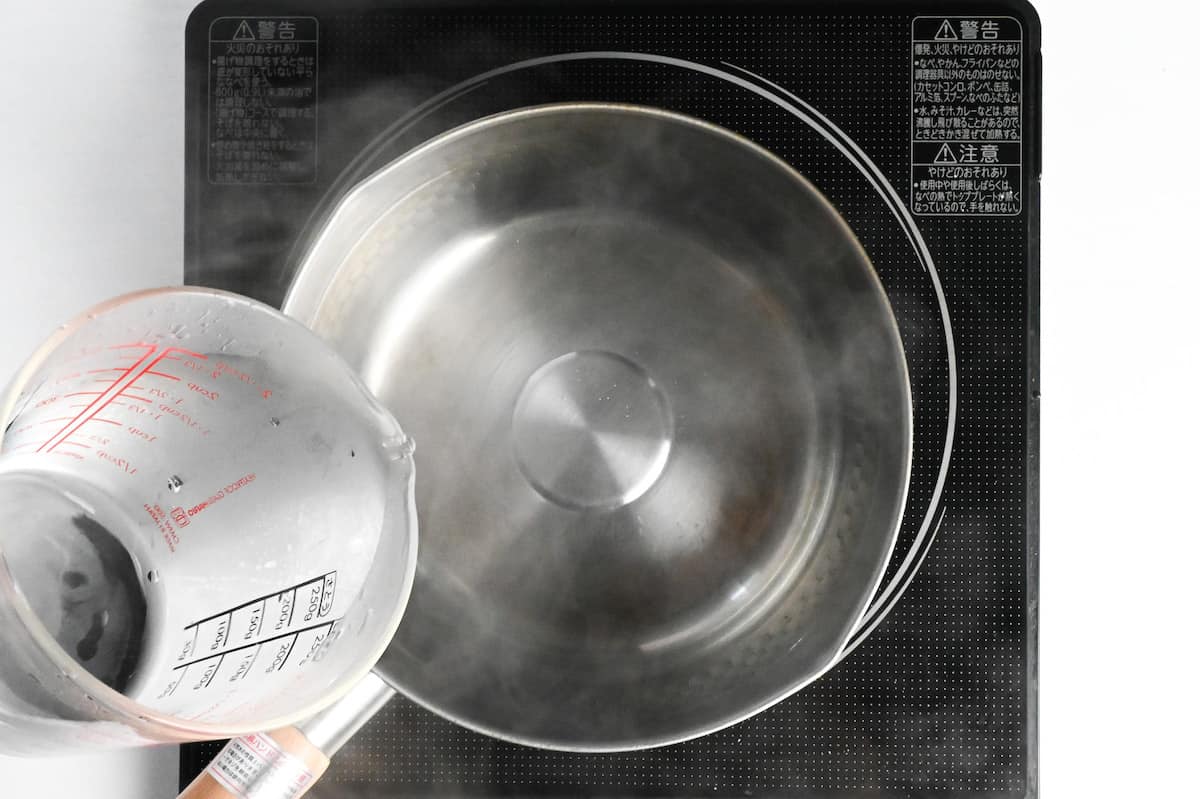
Immediately add the eggs straight from the refrigerator. It is important to use thoroughly chilled eggs for this recipe to work. If you use room-temperature eggs, the end result will be overcooked.
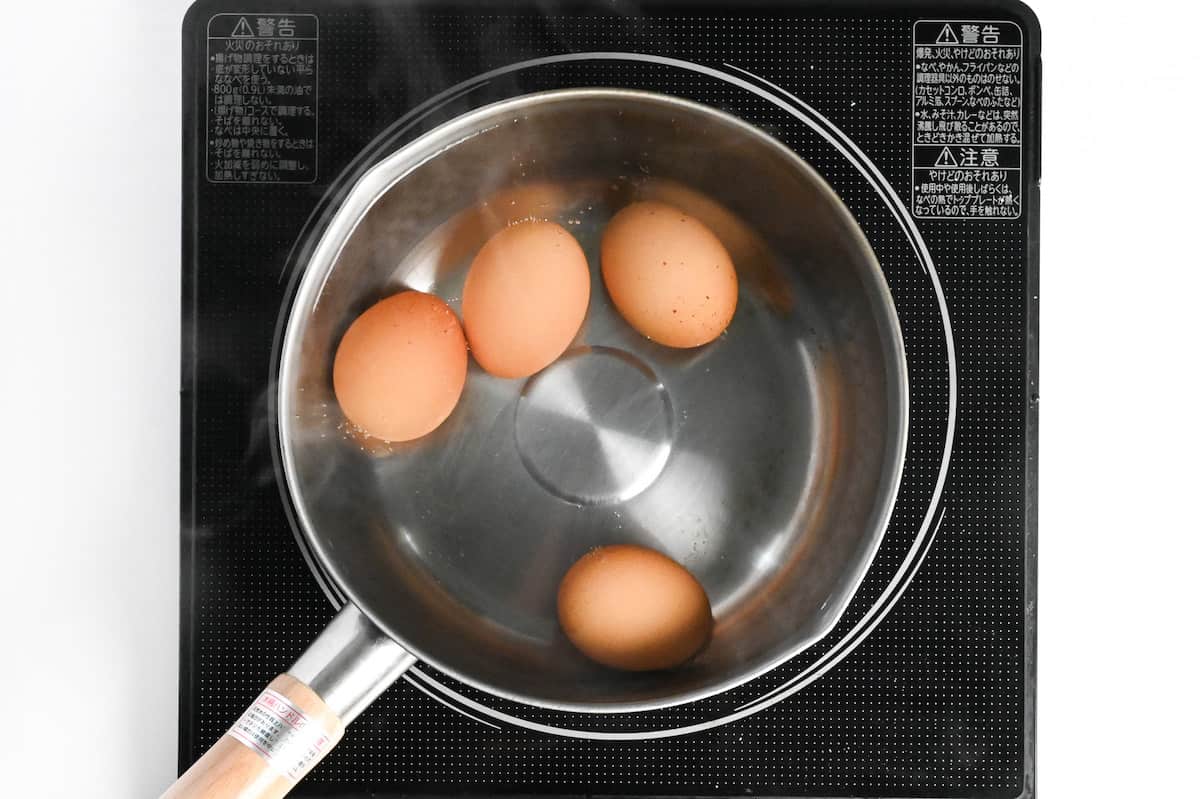
Place a lid on top and remove the pot from the stove. Set a timer for 15 minutes.
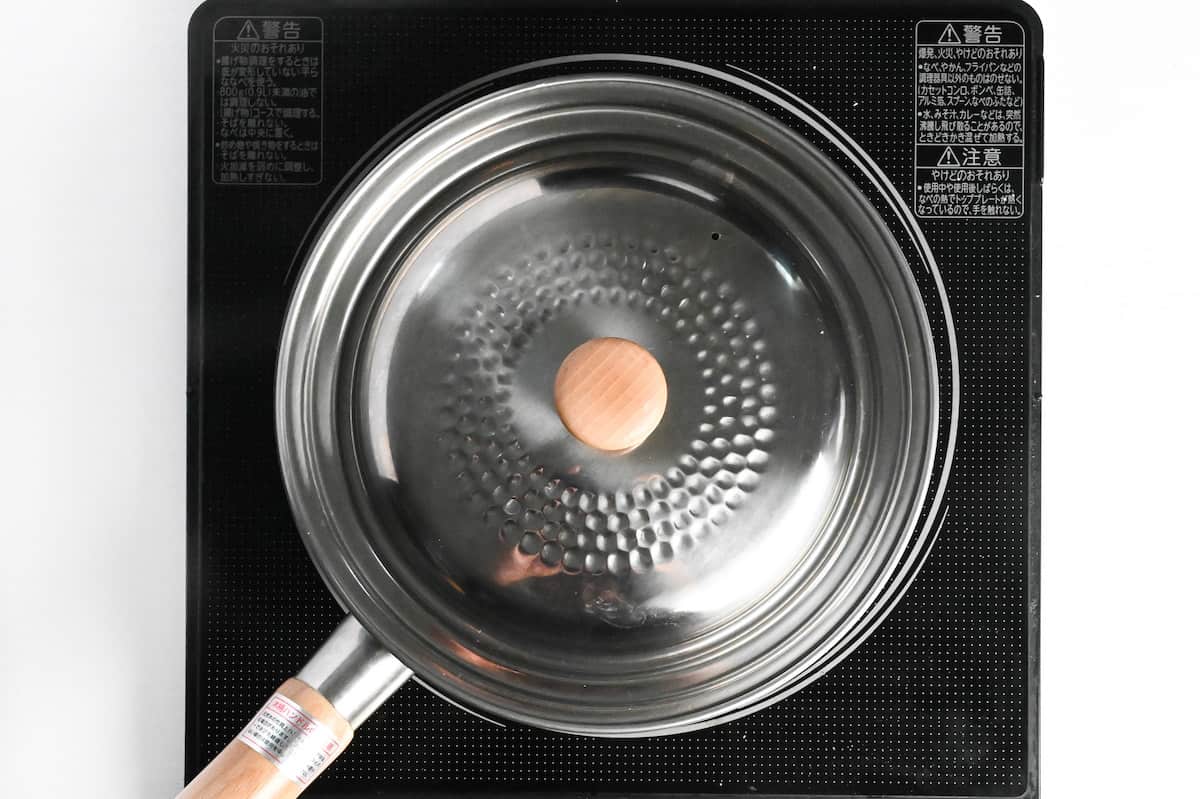
Take the eggs out of the water and transfer to a bowl. Let them rest at room temperature for exactly 3 minutes (set a timer so you don’t forget about them). They will continue to gently cook in the residual heat. In winter, increase this to 5 minutes.
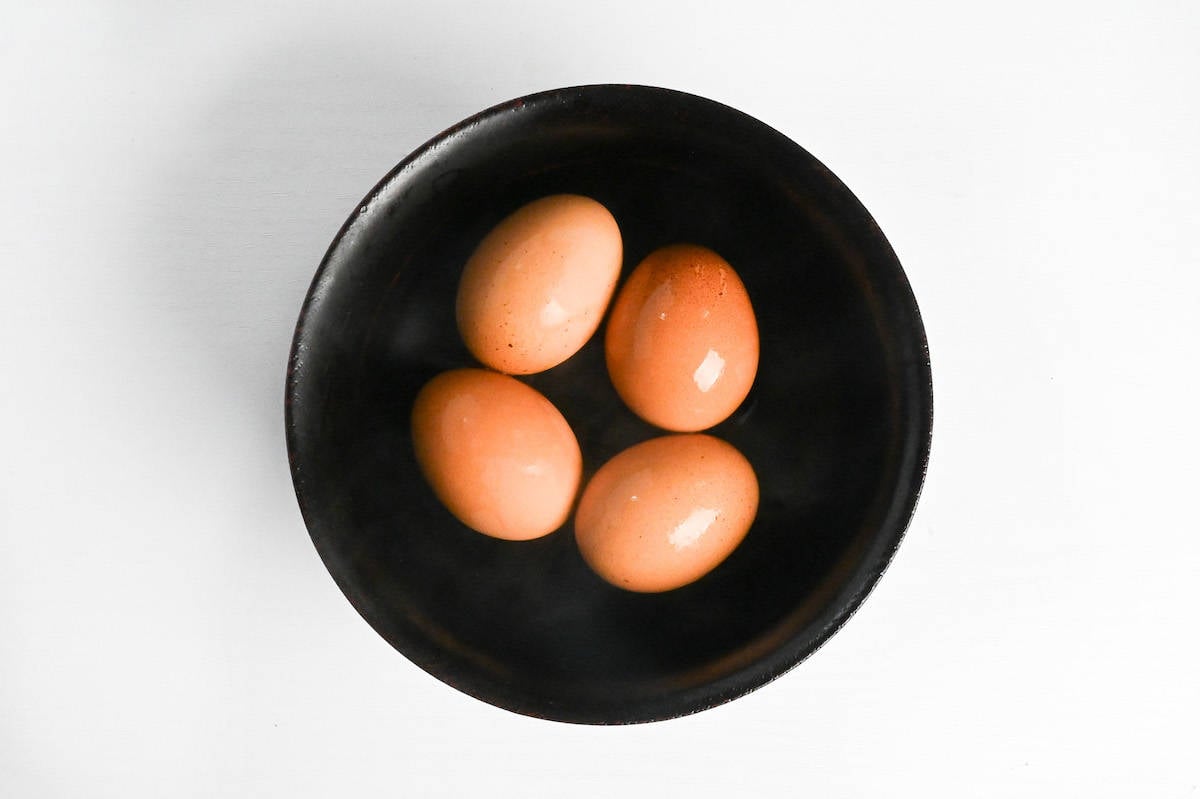
While you wait, prepare ice cold water.
Once 5 minutes are up, submerge the eggs in the ice-cold water to stop the cooking process. Chill for 5-10 minutes. This resting time will make them come more cleanly out of the shells.
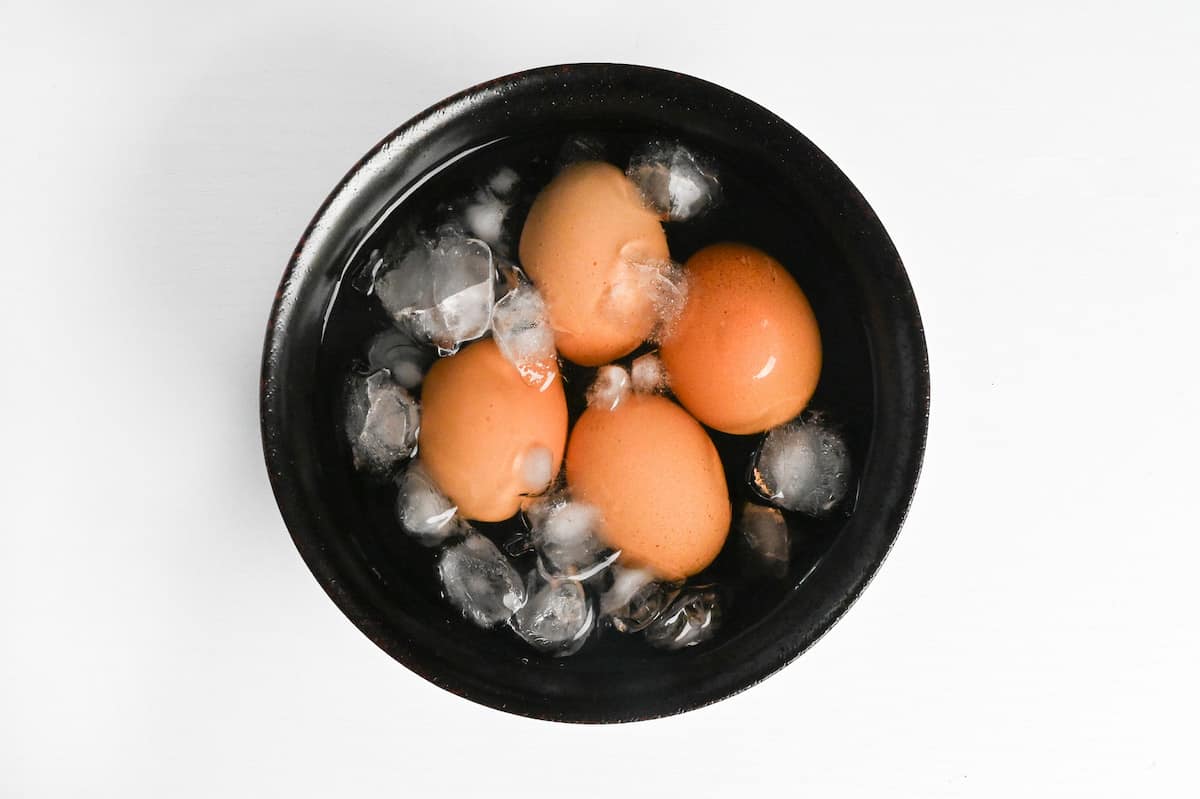
Combine dashi, light soy sauce, mirin and water in a microwavable bowl. Microwave for 1 minute uncovered at 600W. This step is to burn away the alcohol in the mirin.
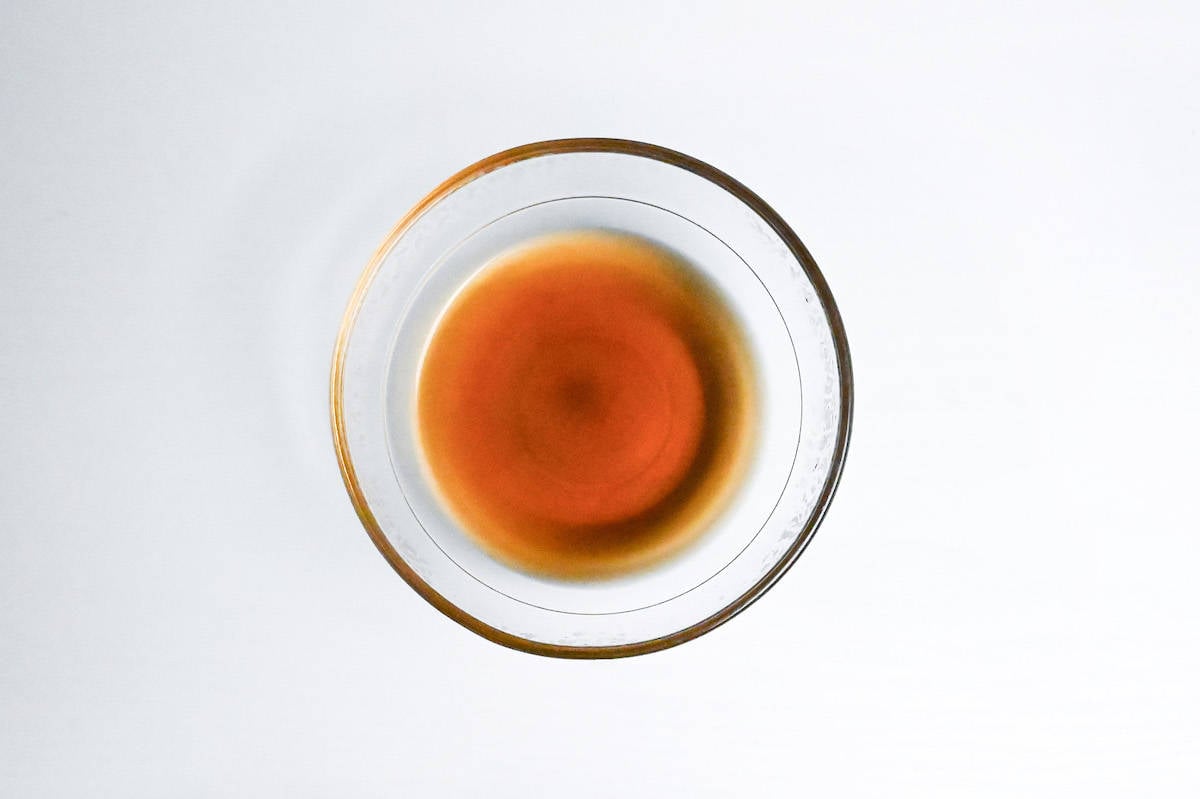
Crack the chilled onsen tamago into a bowl and add approximately 1 tbsp of sauce per serving.
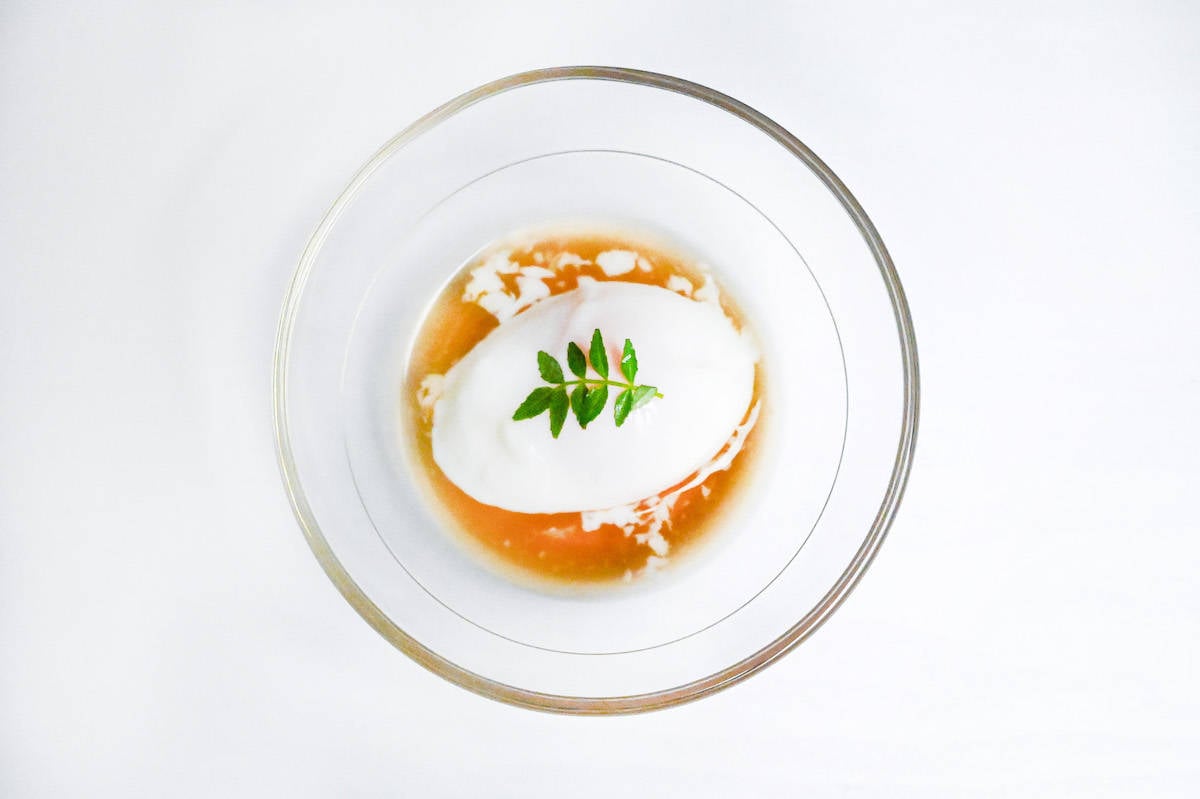
Enjoy as a side, snack or part of a Japanese-style breakfast!
Jump to Full Recipe MeasurementsTips & Tricks
Creating the perfect onsen tamago requires precision, as these eggs are delicate.
A minor misstep can lead to them being overcooked or, on the other hand, not set enough. To help you navigate this process, here are some essential dos and don’ts to ensure the best possible outcome.
Do’s and Don’ts
- Use refrigerated eggs: Ensure the eggs are cold and taken directly from the refrigerator. Do not let them sit out to reach room temperature.
- Ensure water is fully boiling: Use a pot to bring the water to a rolling boil rather than using a kettle or microwave. Make sure the water reaches a vigorous, rolling boil before turning off the heat.
- Chill water thoroughly: Adding chilled water helps bring down the temperature to a suitable temperature to cook perfect onsen tamago. The water should be thoroughly chilled but not ice cold. I recommend around 10°C (50°F).
- Keep the pot covered: Ensure the pot’s lid is securely in place to maintain a consistent water temperature.
- Limit room temperature exposure: After removing from boiling water, let the eggs sit at room temperature to allow them to gently cook using the risidual heat. Keep in mind that this should be limited to just 3 minutes, or 5 minutes in colder climates. Any longer can result in overcooking.
- Cool with ice water: After the 3 to 5-minute room temperature rest, promptly cool the eggs in ice water. Merely using cold water won’t achieve the desired rapid cooling.
- Always think ahead: When preparing onsen tamago in a pot, timing is crucial for achieving the perfect texture. Being too slow can result in an undesirable outcome. Therefore, it is essential to follow the process and prepare in advance. For instance, ensure the lid and timer are ready before the water boils.
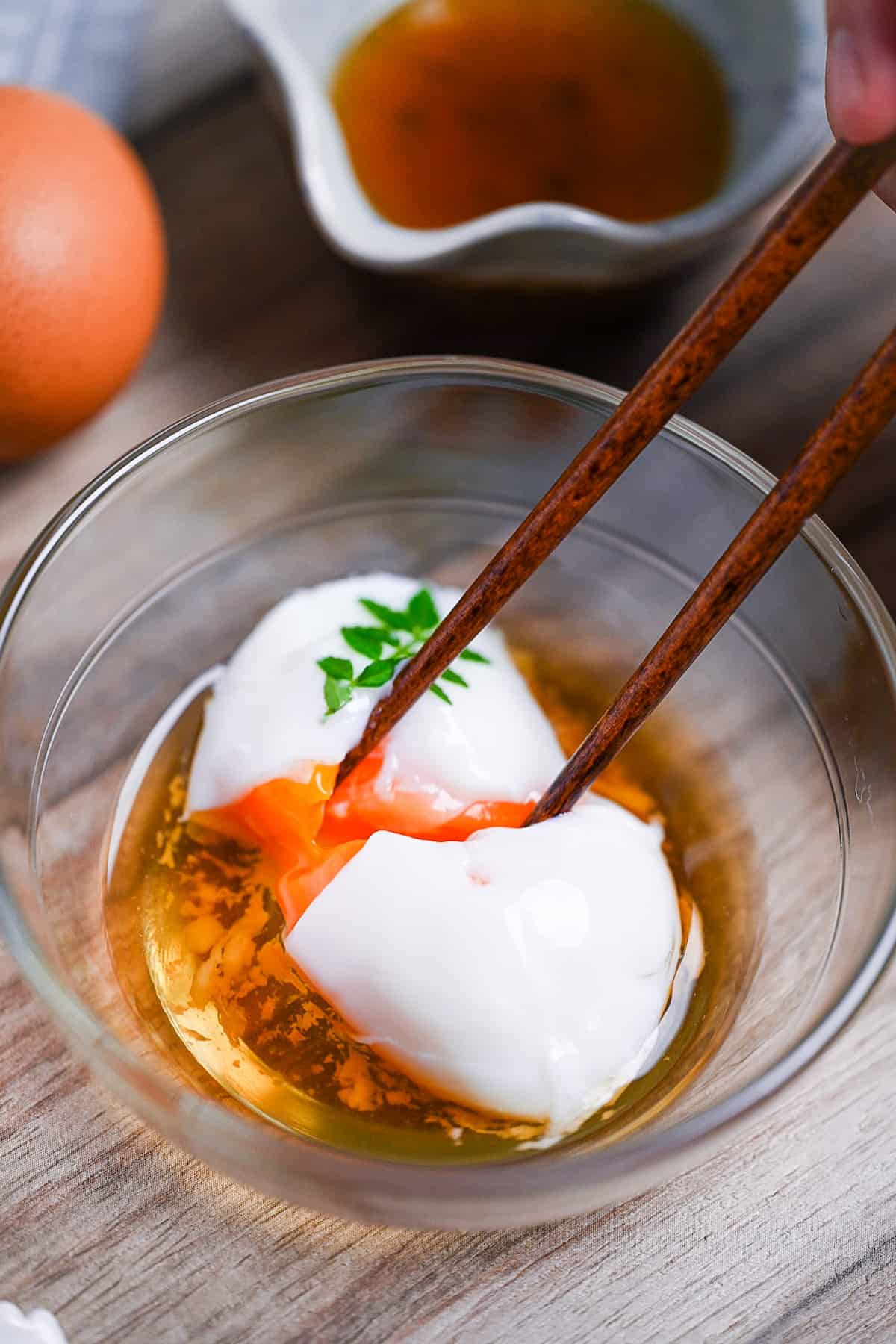
How to Store
Homemade onsen tamago doesn’t have the same shelf life as commercially produced ones. This is mainly due to the quick preparation time and lack of total sterilization.
As a result, even if you leave the onsen tamago with their shells intact, it’s best to consume them by the following day. This is one of the reasons my recipe calls for just four eggs.
Additionally, if the shell cracks when removing the eggs from the pot, eating them right away is crucial to prevent any bacterial growth from the exposed cracks.
Storage Summary
Room temperature – Not recommended.
Refrigerated – Up to 24 hours.
Frozen – Not recommended.
FAQ & Troubleshooting
Here are answers to frequently asked questions I have received across all platforms, including here, YouTube, Instagram, and Pinterest. If you have any questions, feel free to send them to me anytime! It will be a big help for everyone in this community!
There are a few reasons why some eggs might crack while cooking, but the most common is that the egg hits the bottom of the pot hard, creating a small crack that then expands. So possibly, the cracked eggs might have been hit harder than the others. To avoid this, I try not to drop the eggs directly into the water and instead, I put them on a skimmer one at a time and slowly lower them into the pot.
Another possibility is how fresh the eggs are. Extremely fresh eggs tend to have more carbon dioxide gas, which tries to escape when heated. The pressure from this gas can cause the shell to crack.
Additionally, there are individual differences in eggshell hardness. For example, it depends on the age of the hen (younger hens tend to lay eggs with harder shells), the nutrients in the hen’s feed, and the time of year the egg was laid (eggs laid in summer tend to have thinner shells).
Unfortunately, adding more eggs will bring down the water temperature too much. You could try making another batch in a separate pot at the same time, though!
You need chilled eggs to bring down the water temperature. Room-temperature eggs will cook more.
I’m not sure how egg sizes are defined in your country, but I used medium sizes (58g and 64g in Japan). The funny thing is, this size falls under the large to extra large category in the US.
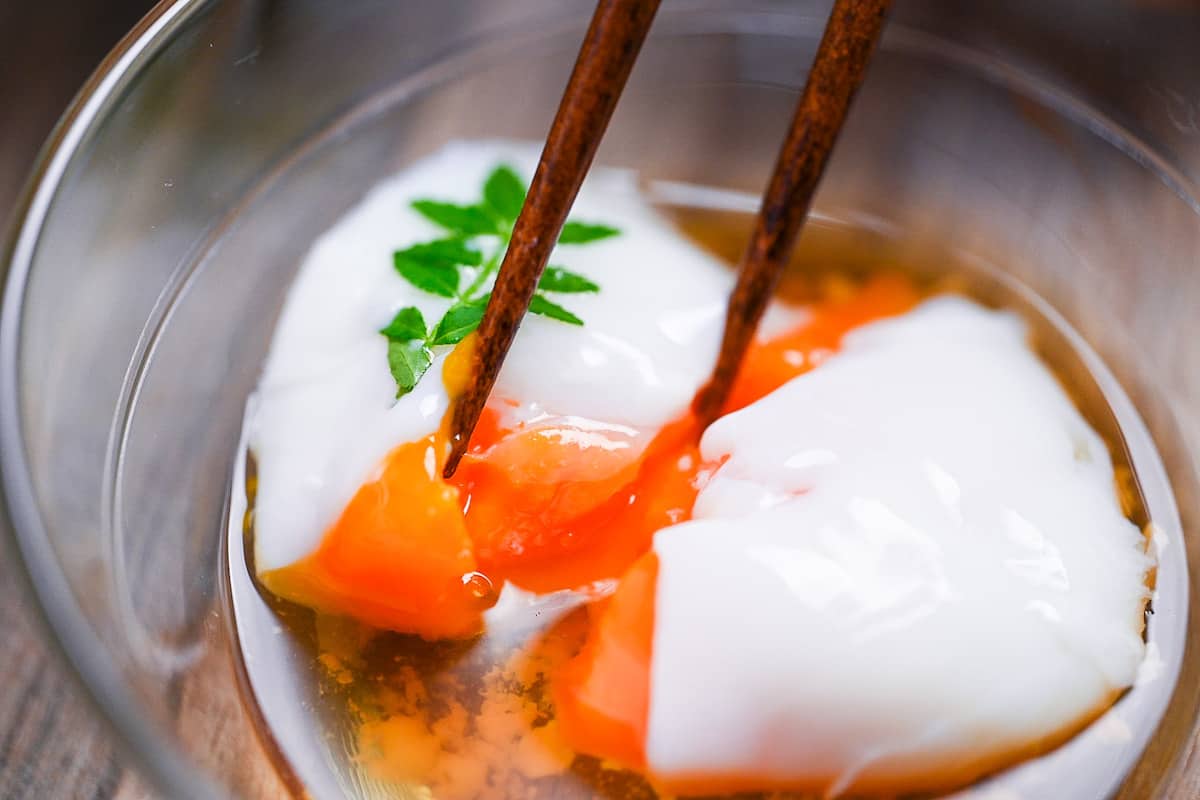
I hope you enjoy this Onsen Tamago recipe! If you try it out, I’d really appreciate it if you could spare a moment to let me know what you thought by giving a review and star rating in the comments below. It’s also helpful to share any adjustments you made to the recipe with our other readers. Thank you!
More Japanese Breakfast Recipes
- Tamago Kake Gohan (Japanese Egg on Rice)
- Natto (Fermented Soybeans)
- Hiyayakko (Chilled Tofu with Toppings)
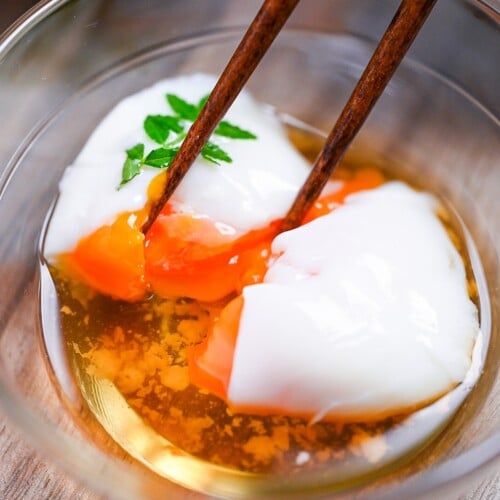
Onsen Tamago (Japanese Hot Spring Eggs)
Ingredients
- 4 eggs chilled & straight from the fridge
- 1500 ml water
- 300 ml cold water chilled in the fridge
- ice cold water
- 2 tbsp dashi stock liquid not powder
- ½ tbsp light soy sauce (usukuchi shoyu)
- 1 tbsp mirin
- 1 tbsp water
Instructions
- Measure out 300 ml cold water and place it in the refrigerator. It should be fully chilled before you start (about 10°C/50°F). Once chilled, add 1500 ml water to a pot and bring to a rolling boil. (Tip: Heating with a lid will speed up the process.)

- Once the water is thoroughly boiling, turn off heat and add the cold water from the fridge.

- Immediately add 4 eggs straight from the fridge. At this point the water should be about 80 °C (176 °F).

- Place a lid on top and set a timer for 15 minutes.

- Remove the eggs and rest in a bowl at room temperature for exactly 3 minutes (5 minutes in winter). Use a timer to ensure accuracy. While you wait, prepare a bowl of ice cold water.

- Once rested at room temperature, pour ice-cold water into the bowl to halt the cooking process and stop them from cooking any further. Rest for 5-10 minutes, this will help them come out cleanly before serving.

- Combine 2 tbsp dashi stock, ½ tbsp light soy sauce (usukuchi shoyu), 1 tbsp mirin and 1 tbsp water in a small microwavable bowl. Microwave uncovered for 1 minute at 600W. The sauce can be served warm or cooled depending on preference

- Crack the egg into a serving bowl and add about 1 tbsp of sauce for each serving. Enjoy!

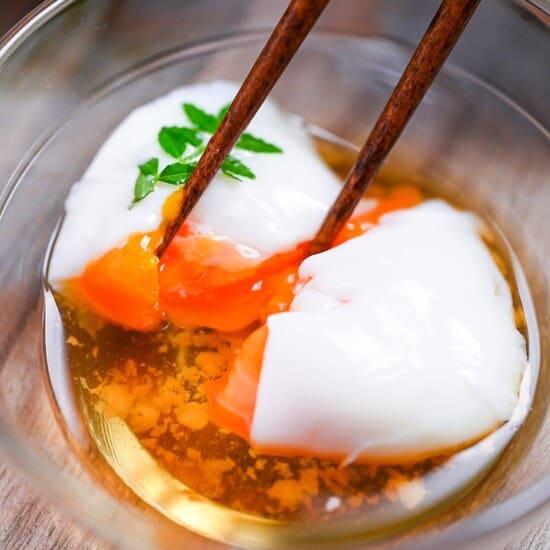




Hello Yuto, I really like your recipes. I am going to try this one with a poach eggs. More simple forme me. I’m an old lady who love Japanese food and sometimes try short cut.
Thank you for recipes.Sorry for some of my adaptation, wish you the best.
Hi francine,
Thank you for your comment!
There’s absolutely no need to apologize! I only share these Japanese recipes as inspiration, and I’m always happy when my readers make them your own. I believe adapting dishes to suit your preferences and what’s available to you is part of the joy of cooking.
And warm comments like yours is incredibly encouraging and motivates me to continue developing new recipes. I truly appreciate your support!
Yuto
Aloha Yuto-san, I saw the video on IG and it led me to this page, which I was very excited to find. I typically don’t find medium-sized eggs in the grocery store, so how would you suggest I adjust the time (and any ingredient amounts) for large or extra-large eggs? Mahalo! (Thank you.)
Hi Erika,
Thank you for finding my website!
I’m not sure how egg sizes are defined in your area, or if it’s a universal thing, but here in Japan, the definition of medium size is between 58g and 64g. As far as I know, Japanese medium eggs are a similar size to US large eggs so in theory, you don’t need to change the recipe. Hope this helps!
Yuto
Hi Yuto-san. Your Onsen Tamago looks amazing. Thanks for sharing this recipe. Question: Instead of bringing the water to boil and adding cold water to lower the temperature, can I just bring the water to 80 degrees C with a thermometer?
Hi Julie,
Thank you for checking out this recipe! And yes, if you have a thermometer, you can just heat the water to 80! 🙂
Yuto
Thank you!
Hello Yuto,
Thanks for sharing this recipe. When I placed the eggs from the fridge directly to the 80C water, some of the eggs cracked. Why is that and why only some of the eggs cracked but not the others?
Hi Dennjs,
Thank you for sharing your experience and question!
There are a few reasons why some eggs might crack while cooking, but the most common is that the egg hits the bottom of the pot hard, creating a small crack that then expands. So possibly, the cracked eggs might have been hit harder than the others. To avoid this, I try not to drop the eggs directly into the water and instead, I put them on a skimmer one at a time and slowly lower them into the pot.
Another possibility is how fresh the eggs are. Extremely fresh eggs tend to have more carbon dioxide gas, which tries to escape when heated. The pressure from this gas can cause the shell to crack.
Additionally, there are individual differences in eggshell hardness. For example, it depends on the age of the hen (younger hens tend to lay eggs with harder shells), the nutrients in the hen’s feed, and the time of year the egg was laid (eggs laid in summer tend to have thinner shells).
I can’t say for sure what’s causing it in your case, but I hope this info helps. If you have further questions, ask me here anytime! 🙂
Yuto
Thank you so much for your reply. I actually used a ladle to place the eggs one at a time. Anyways, I’ll try to be more careful next time.
I followed the instructions for this recipe. Yet somehow the eggs were still undercooked. I guess my question is what is the key temperature for cooking the eggs for this recipe? I would like to try this again, but will use a thermometer to make sure I have the temp right.
Thank you once again and for sharing all these wonderful recipes!
May I ask how undercooked the eggs were? Were they slightly undercooked or almost raw?
The crucial point in this recipe is getting a water temperature of 80°C (176°F) after adding 300 ml of chilled water to 1500 ml of boiling water in a pot. However, if the eggs still come out underdone, you can consider leaving them in the pot for an additional 1-2 minutes. This adjustment may be necessary due to variations in climate or the pot’s heat retention capabilities.
If you have any further questions, please don’t hesitate to ask. I’m here to help!
Yuto